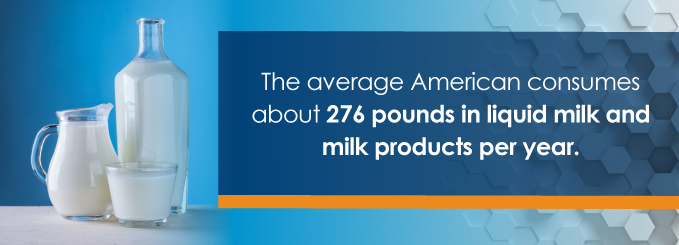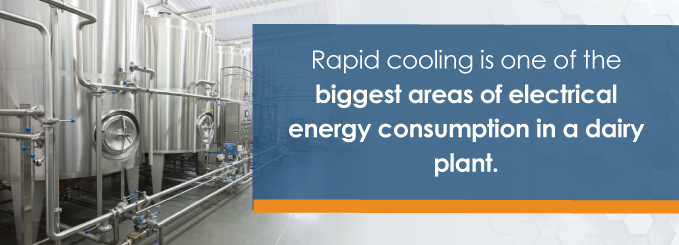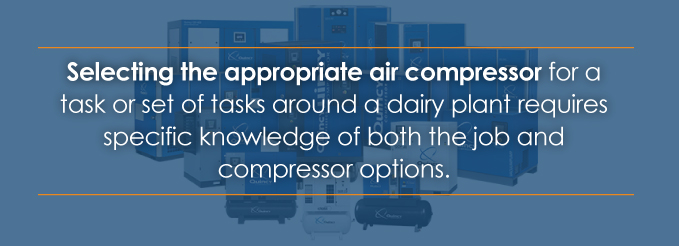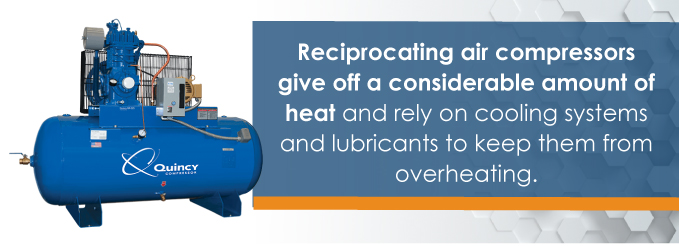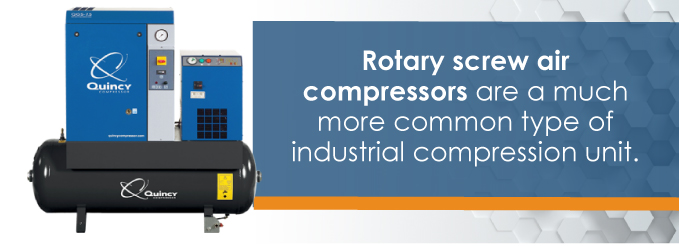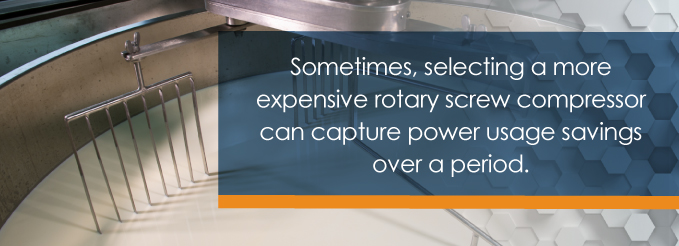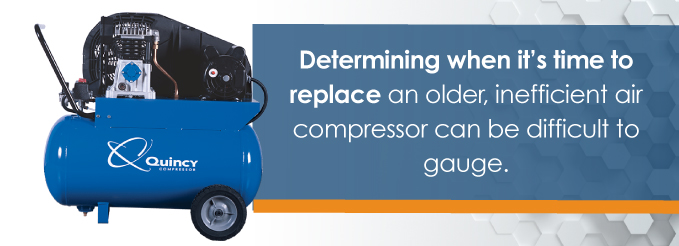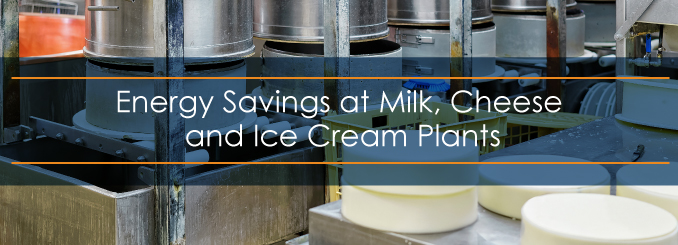
How important are milk and dairy products to this country? According to U.S. Senator Diane Feinstein of California:
“The milk produced by America’s 65,000 dairy farmers represents the second largest agricultural commodity industry in the United States by value. Milk accounted for about $27 billion of cash receipts for producers in 2005. Americans drink more than 6 billion gallons of milk per year, and another 10 billion gallons of milk are used to produce cheese.”
Milk, butter and other dairy products are consumer staples found in nearly every American household. Most grocery shoppers consider milk and other dairy products essential food items, and the average American consumes about 276 pounds in liquid milk and milk products per year. That doesn’t mean, however, that the prices of dairy products are invulnerable to external market forces, such as downturns in the economy, overproduction and surpluses and occasional reductions in global consumer demand.
In good times, customers may stay loyal to a particular brand of butter or ice cream, but when unemployment is on the rise or inflation decreases consumer purchasing power, heads of households seek to stretch their budgets. This includes selecting less expensive competing brands and reducing their consumption of the types of dairy products considered luxuries, like ice cream and yogurt. The price a consumer is willing to pay for a gallon of milk just isn’t something that any individual dairy plant — or the entire dairy industry for that matter — is able to control. There are, however, a number of measures that milk, cheese and ice cream producers can take to improve their dairy plants’ efficiencies, protect profit margins and maintain their competitive edges.
Compressed Air Savings for the Dairy Industry
Among the solutions dairy farmers and milk processing operations have utilized to bring down costs and increase efficiency are:
- Converting to renewable energy sources, like solar and wind, to reduce reliance on traditional power suppliers.
- Purchasing grain futures to offset fluctuations in the price of cattle feed. (The price of feed often rises with increased energy prices, sometimes negatively impacting dairy operations on two cost fronts.)
- Upgrading the pumps, heat exchangers, air compressors and other machinery needed for cooling, pasteurization and processing dairy products.
Plant managers are aware of the need for significant amounts of electricity in modern dairies. For instance, to ensure the quality and safety of milk and milk products, producers must use machines to quickly cool raw milk after it’s collected from the cow. This rapid cooling is one of the biggest areas of electrical energy consumption in a dairy plant. When first pumped, the milk has a temperature of 95 — 99 degrees Fahrenheit — very close to the temperature of a cow’s udders. The unprocessed milk has to be refrigerated and condensed quickly to prevent bacterial growth and to keep it fresh.
Part of this cooling process involves the use of air compressors, as well as other types of machinery. As manufacturers of many of the high-quality industrial air compressors utilized by dairies in the production of milk, cheese and ice cream, we recommend for dairy plant engineers to pay close attention to the energy inputs and efficiencies of all equipment used in the refrigeration process. Dairy operations seeking maximum profitability can often find untapped savings in newer, high-efficiency compressed air systems.
Contact Us Learn More Find a Dealer Near You
How Air Compressors Are Used in Dairies
While uses for compressed air are seemingly limitless, the applications on dairy farms and in milk processing plants are very specific, including:
- Compressing refrigerant gas during the milk cooling process
- Cleaning the pumps and piping that move milk through the facility
- Creating the vacuum suction in some types of milking machines
- Creating an air stream to clear debris and dust from delicate machinery
There are three types of refrigeration air compressors used in this process: reciprocating, scroll and rotary screw. Each has its advantages and disadvantages in terms of cost, maintenance, efficiency and suitability for dairies. While reciprocating air compressors have dominated dairies for decades, many companies in the industry are replacing their older reciprocating units with newer ones, or with quieter, energy-efficient rotating screw models.
How Different Air Compressors Work
It’s important for anyone who’s in charge of purchasing air compressor units for dairies to have an understanding of the types of air compressors, their mechanics, efficiencies and ratings. Unfortunately, there are no “universal” or “one size fits all” air compressor options. Selecting the appropriate air compressor for the myriad of tasks around a dairy operation requires specific knowledge of both the job and compressor options. In this discussion, we’ve assumed a basic knowledge of air compressors. For further assistance, contact one of our professional consultants.
Positive Displacement Air Compressors — These units develop pressurized air by trapping it in a space and then reducing the volume. A simple example of the positive displacement of compressed air would be the type of hand pump used to fill up a basketball. The pump has a single piston attached to a plunger handle. When the user extends the plunger handle, air is drawn into the cylinder by the vacuum created by the piston. When they push the plunger handle down, the piston decreases the volume in the cylinder in front of it, and the pressurized air moves into the basketball. Reciprocating and rotary screw air compressors, covered in their own section, use positive displacement to create pressurized gas.
Non-Positive Displacement Air Compressors — Because non-positive air compressors don’t work by expanding the volume of an air chamber, they’re not generally referred to as “negative placement,” which would imply that they do the opposite of what positive displacement compressors do. Non-positive air compressors move trapped air through channels via interlocked coils or rotating screws. Scroll compressors are examples of non-positive displacement units.
Reciprocating Air Compressors — This positive displacement air compressor relies on cylinders and pistons to reduce volume and push air into the tank. Like a bicycle or handheld pump, air is drawn into the cylinder when the piston recedes and creates a vacuum. It’s then pushed by the piston through a one-way valve and piped into the air storage tank. Reciprocating compressors can have one cylinder or multiple cylinders on a crankshaft. This aspect of the compressor is similar to an automobile engine, which converts liquid gasoline into combustible vapor in roughly the same fashion.
Also like a car engine, reciprocating air compressors give off a considerable amount of heat and rely on cooling systems and lubricants to keep them from overheating. Reciprocation compression cylinders can be single-action or double-action. In double-action cylinders, the piston uses the cylinder volume on both the front and back end of the piston to compress gas during both cycle strokes.
Not to be confused with single-action and double-action, the terms “single-stage” and “double-stage” refer to whether the machine compresses the gas once or twice before piping it into the tank. Single-stage reciprocating air compressors use the above-described piston process to achieve compression. Two-stage reciprocating air compressors use the same process, but the air is cooled before a final compression. Hot air expands, so by cooling the compressed air, the unit is able to force an even greater amount of air into a smaller volume. The cooled air is then compressed even further with a second, smaller cylinder. Two-stage air compressors can generally achieve a higher horsepower (Hp) than their single-stage counterparts, but they’re also generally more expensive to purchase. Because they are more complex units, they have higher maintenance costs.
Scroll Air Compressors — Using technology developed by French engineer Léon Creux over a hundred years ago, scroll air compressors, also referred to as “rotary” air compressors, are a much more recent innovation. While the outward appearance and function of scroll air compressors may resemble a reciprocating or rotary screw compressor, the mechanics are completely different. Instead of the piston found in the reciprocating air compressor, the scroll compressor uses two interlocked pieces of spiral metal (the scrolls) that share the same center. The pieces are essentially inside or wrapped around one another.
One scroll is usually fixed while the other moves to create points of contact that trap air. As the moving coil touches the fixed one, the air moves along until it reaches a pressurized tank. In addition to its use in air compressors, scroll rotary technology can be found in small heating and cooling systems and in some automobile air conditioning systems. They are not as common, however, in the dairy industry. Although scroll air compressors can be quiet and energy efficient, they are difficult to repair in the field, making them unsuitable for some industries.
Rotary Screw Air Compressors — Rotary screw air compressors are a much more common type of industrial compression unit. A rotary screw air compressor is a positive displacement compression system that utilizes a pair of matching helical screws. The screws twist in concert, creating an air channel and resulting in a vacuum. Air is pulled into the unit through a filter, which removes impurities that can interfere with the smooth functioning of the machine. The filtered air moves along the channel that’s created by the threads of the screws. The air ends in a chamber that decreases in size, creating pressure. With all other things being equal, rotary compressors are generally quieter and more efficient than reciprocating air compressors. Some units rely heavily on oil to seal and lubricate the screws. There are also oil free rotary screw compressors for situations that require class zerp compressed air.
How Can Upgrading Your Air Compressors Save Your Dairy Operation Money?
In the United States, the Compressed Air & Gas Institute (CAGI) is the primary organization responsible for testing and rating commercial air compressors. In conjunction with its European counterpart PNEUROP, the European Association of Manufacturers of Compressors, Vacuum Pumps, Pneumatic Tools and Air & Condensate Treatment Equipment, CAGI has developed performance-testing standards for compressed air units. The CAGI Performance Verification Program rates units with regard to the following criteria:
- Unit Type — Whether the compressor is reciprocating, scroll, or rotary screw.
- Number of Stages — Single or Double. (Double-stage units compress cooled air in a second cylinder before piping it to the tank.)
- Cooling Type — Air or Water Cooled. (Single-stage units are often air-cooled; two-stage units are typically water-cooled.)
- Oil-Injection — Some units require oil injection, others are oil-free. (This can be an important consideration in the heavily regulated dairy industry.)
- Rated Capacity at Full Operating Pressure — Measured by actual cubic feet per minute (acfm), which is the air flow volume under actual conditions.
- Full Load Operating Pressure — Full load means the point at which a unit is operating at full speed with a fully open inlet and discharge delivering maximum airflow. The corresponding number is measured in psig or pounds per square inch gage.
- Maximum Full Flow Operating Pressure — This is the maximum attainable pressure (also measured in psig) when the unit is in full flow.
- Drive Motor Nominal Rating — Measured in horsepower, this the rating the manufacturer gives to the air compressor’s motor. This number can be used to determine the maximum power output of the unit.
- Drive Motor Nominal Efficiency — This is a measure of power conservation (or loss), calculated by output power divided by input power multiplied by 100. The higher the drive motor nominal efficiency, the more energy efficient the unit’s motor. It’s important to remember that in some units, the motor may not be the only part of the compressor that consumes energy. (See Fan Motor Nominal Efficiency.)
- Fan Motor Nominal Rating — This is a horsepower rating given to cooling fans on fan-cooled compressed air units.
- Fan Motor Nominal Efficiency — Measures power efficiency with regard specifically to the fan on compressors equipped with one.
- Total Package Input Power at Zero Flow — Also referred to as “unloaded power.” This is a measure (in kilowatts) of power consumption taken when the inlet valve is closed.
- Total Package Input Power at Rated Capacity and Full Load Operating Pressure — Also measured in kilowatts, this is the input power required when the compressed air unit is running at the manufacturer’s rated capacity.
- Specific Package Input Power at Rated Capacity and Full Load Operating Pressure — This is a measure of efficiency that rates how well a unit generates compressed air, calculated by dividing the power input by 100 cfm (cubic feet per minute). The specific package input power at rated capacity and full load operating pressure is measured in kW/100cfm, and is one of the best ways to determine power efficiency between units. The lower the number, the lower the cost per cfm.
CAGI measurements and ratings allow compressed air buyers and efficiency analysts to make side-by-side comparisons between a variety of compressed air units. For instance, if a dairy operation was trying to select between two compressor models, with all other things being equal, it would be a more efficient choice to select the one with the lower Specific Package Input Power at Rated Capacity and Full Load Operating Pressure. With so many independent variables, the selection between two units rarely comes down to a single factor, but without knowledge of the more technical compressed air machine metrics, a missed consideration could be very costly over time.
Factors to Consider When Selecting Air Compressors
Most dairy plant equipment purchasing managers have to weigh long-term vs. short-term cost savings when considering buying new equipment, especially to replace obsolete machinery or modernize various aspects of their facilities. This applies to all types of equipment, including air compressors. Sometimes, selecting a more expensive rotary screw compressor can capture power usage savings over a period. And while initial expenditures and variable costs are both important factors, there are a number of other important considerations that should also be weighed.
- Oil-injection vs. Oil-free Units — This is an important consideration for food processing like milk pasteurization. Many double-screw systems use oil as a lubricant, sealant and coolant. In some instances, this many introduce fluids into the air supply, as there can be lubricant bleeding. The Food and Drug Administration addresses contamination of milk via air compressors in their Pasteurization Equipment and Procedures Manual.
- Noise Level — If the compressors will be used in the area of livestock — compressed air is sometimes used to create vacuum suction in milking machines — a quieter rotary screw unit may be the better choice.
- Output Capacity of the Unit vs Demand Required — The various tasks around a dairy operation require different cubic feet minute (acfm) output. Some jobs may require a powerful compressor, while for other uses a smaller unit may be sufficient.
- Potential Costs — The cost of air intake filters in addition to maintenance of the units.
- Field vs. Manufacturer Repair — Whether the air compressor unit can be repaired in the field or has to be sent back to the manufacturer. This also includes what is covered under the warranty.
- Space, Size and Usage — The physical size and weight of the compression unit and its housing, as well as any space considerations that may affect portability and storage. Additionally, will the air compressor be used occasionally, regularly or around the clock?
- Foreseeable Compressed Air Needs — Will the unit eventually need to perform at a higher capacity?
When is it Time to Replace an Air Compressor?
Determining when it’s time to replace an older, inefficient air compressor can sometimes be difficult to gauge. With proper maintenance and servicing, both reciprocating and rotary screw air compressors can perform with high levels of efficiency for years. Nevertheless, as the compressed air machine industry evolves, air compressors will continue to get quieter, more powerful, more efficient and less expensive to maintain. Questions that a dairy operations manager or engineer should ask when determining to replace an air compressor include:
- Do the current units still meet the requirements of the job?
- Would replacing today’s unit result in a decrease in power consumption? Compare the Specific Package Input Power at Rated Capacity and Full Load Operating Pressure of the unit to that of newer models.
- Is the air compressor near the end of its life expectancy or outlived it?
- Is the compressed air unit still under warranty?
- Would a unit with a reduced noise level be better suited for this job?
- How many compressed air units in different parts of the dairy operations will have to be replaced simultaneously?
Develop a Relationship with Your Air Compressor Manufacturer & Providers
If you’ve experienced an increase in power consumption that’s not commensurate with milk production levels and energy prices, it may be time to perform an energy efficiency audit on your equipment. If your air compressors and other machines are becoming less efficient, it may be time to replace them. Manufacturers like Quincy Compressors will often offer evaluations and consultation to guide the process. This can be a powerful step if you’re planning to replace a large number of air compressors or if you’re expanding operations. If your intention is to phase out older units as they become too expensive to repair or stop functioning, you may want to consider upgrading to a quieter, more energy-efficient unit. Depending on intended usage, the difference in cost can usually be made up during the life of the unit.
Knowing the right person to talk to about your operation’s air compressor needs can improve your business and output. At Quincy Compressor, we strive to develop relationships with our customers in dairy and in other industries. In many cases, that means showing plant managers and engineers ways to cut energy costs and secure a lower cost of ownership over time. Contact us today, and we’ll be happy to assist you in choosing the right solutions.


